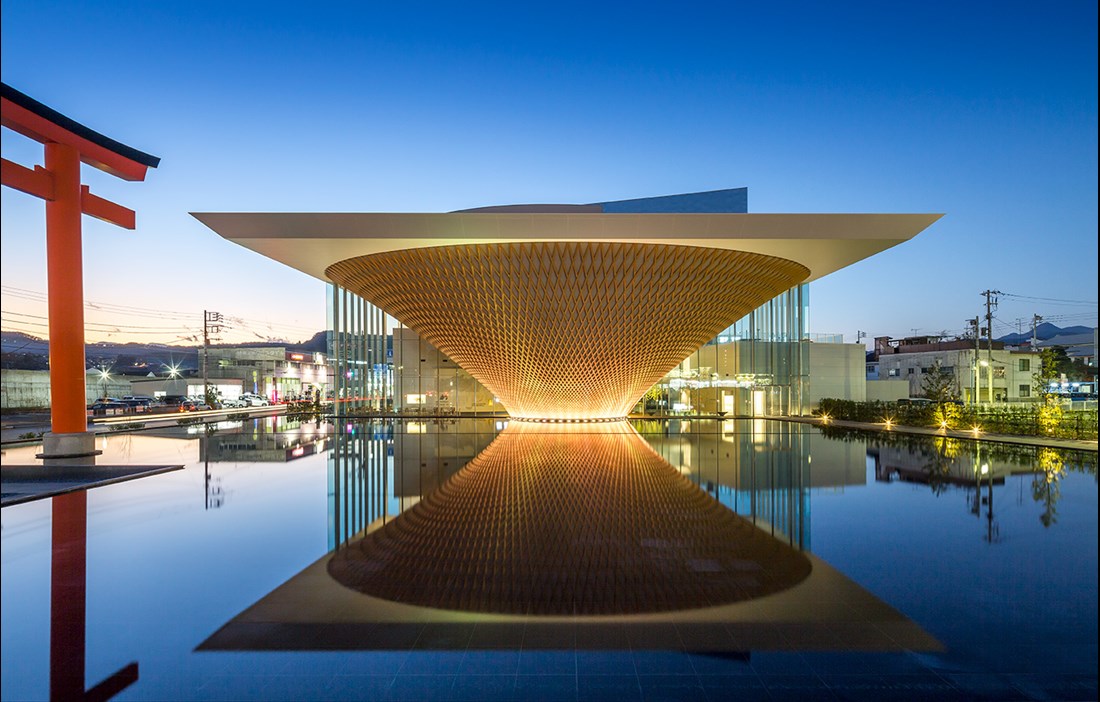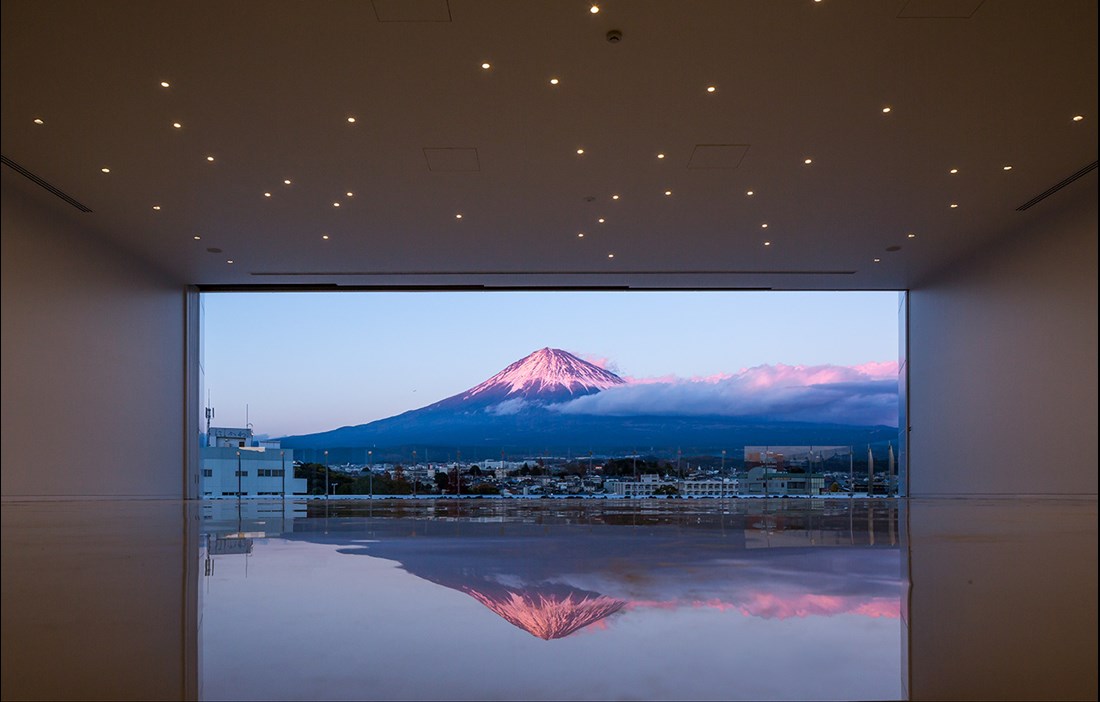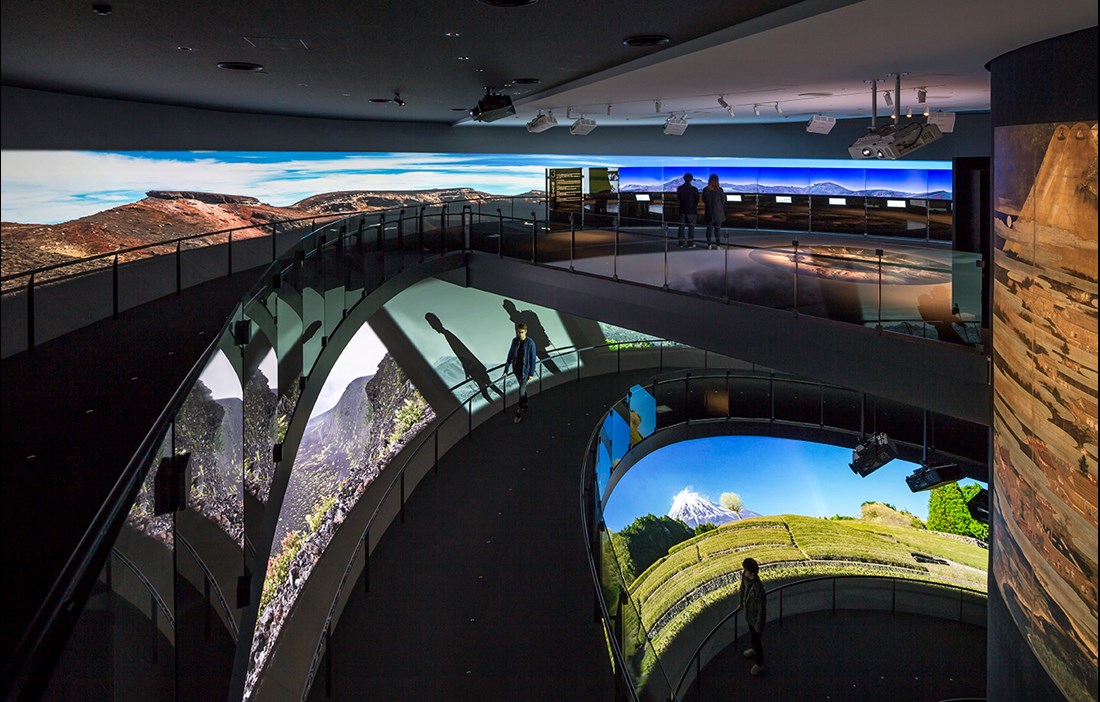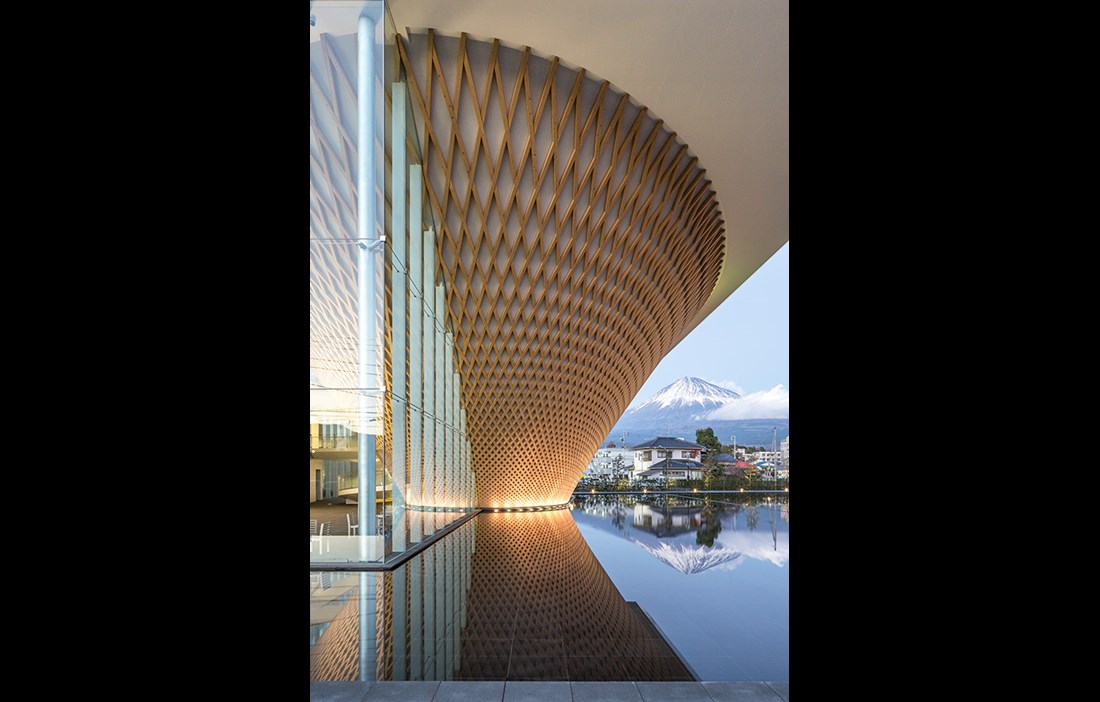At 3,776 metres, Mount Fuji is Japan’s highest mountain and has been a World Heritage Site since 2013. On still, clear days, the volcano is beautifully reflected in the lakes at its base. This inspired Shigeru Ban’s design for the mountain’s new visitor centre, which is shaped like Mount Fuji – but inverted. The building is positioned at the back of an artificial pond and the reflection in the water gives visitors the illusion of seeing the actual volcano.
Shigeru Ban is renowned for choosing simple materials such as paperboard and wood for his works. Mount Fuji World Heritage Center is no exception. Large areas of glass cover the building, but the most striking feature is the intricate wooden lattice that clads the wall. The conical structure is built around a shell of steel trusses and uses an inner spiral steel frame for bracing. The base of the carcass is just 10 metres in diameter down at ground level, while the fifth floor comprises a 46 x 29.2 metre slab made up of steel beams and ties that support the volume above, while also taking the tensile forces from the steel trusses. The region is regularly hit by earthquakes and in order to keep the whole structure in equilibrium during a quake, it is supported by four external steel posts that are integrated into the glass façade.

























